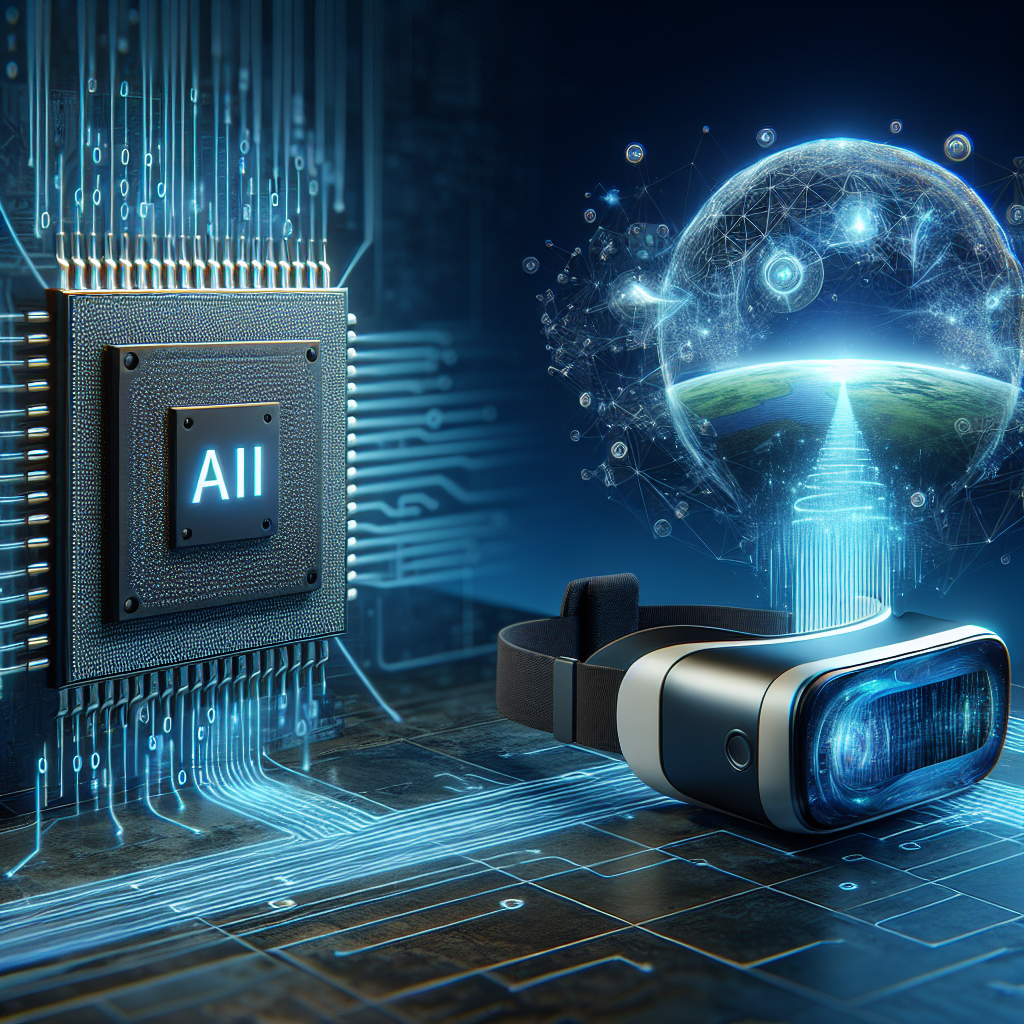Artificial intelligence (AI) and virtual reality (VR) are two cutting-edge technologies that are rapidly transforming the way we interact with the world around us. While each technology has its own unique capabilities and applications, when combined, AI tools in virtual reality have the potential to revolutionize the way we experience and interact with the digital world.
AI tools in VR can enhance the immersive experience by providing more realistic and personalized interactions. From intelligent avatars to virtual assistants, AI-powered tools can create a more dynamic and engaging virtual environment. In this article, we will explore the potential of AI tools in virtual reality and how they are shaping the future of digital experiences.
Enhancing Immersion with Intelligent Avatars
One of the key ways that AI tools can enhance the VR experience is through the creation of intelligent avatars. These avatars can be programmed to interact with users in a more realistic and human-like manner, providing a more immersive and engaging experience. By using AI algorithms, avatars can learn and adapt to user behavior, making interactions more personalized and dynamic.
Intelligent avatars can be used in a variety of applications, from virtual meetings and conferences to gaming and entertainment. For example, in a virtual meeting, an AI-powered avatar can help facilitate discussions, provide information, and even assist with tasks such as scheduling and note-taking. In a gaming environment, intelligent avatars can provide more challenging and realistic opponents, creating a more engaging and immersive gaming experience.
Personalized Virtual Assistants
Another way that AI tools can enhance the VR experience is through the use of personalized virtual assistants. These assistants can help users navigate the virtual environment, provide information and recommendations, and even assist with tasks such as shopping and scheduling. By using AI algorithms, virtual assistants can learn and adapt to user preferences, providing a more personalized and tailored experience.
Virtual assistants can be particularly useful in applications such as virtual shopping and e-commerce. By using AI algorithms to analyze user behavior and preferences, virtual assistants can provide personalized recommendations and suggestions, making the shopping experience more efficient and enjoyable. In addition, virtual assistants can help streamline the checkout process, making it easier for users to make purchases within the VR environment.
Enhancing Realism with AI-Powered Graphics
AI tools can also be used to enhance the realism of graphics in virtual reality environments. By using AI algorithms to analyze and enhance images, virtual reality experiences can be more visually stunning and immersive. AI-powered graphics can help create more realistic textures, lighting effects, and animations, making virtual environments more lifelike and engaging.
AI-powered graphics can be used in a variety of applications, from gaming and entertainment to training and simulation. For example, in a virtual training environment, AI-powered graphics can help create more realistic simulations of real-world scenarios, allowing users to practice and improve their skills in a safe and controlled environment. In a gaming environment, AI-powered graphics can help create more immersive and visually stunning worlds, enhancing the overall gaming experience.
Frequently Asked Questions
Q: How can AI tools enhance the VR experience?
A: AI tools can enhance the VR experience in a variety of ways, from creating more realistic and personalized interactions with intelligent avatars to providing personalized recommendations and assistance with virtual assistants. AI-powered graphics can also help enhance the realism of virtual environments, making them more visually stunning and immersive.
Q: What are some applications of AI tools in VR?
A: AI tools in VR can be used in a wide range of applications, including virtual meetings and conferences, gaming and entertainment, virtual shopping and e-commerce, and virtual training and simulation. AI-powered tools can help create more engaging and immersive experiences in these applications, making them more interactive and dynamic.
Q: How can AI-powered avatars improve the VR experience?
A: AI-powered avatars can improve the VR experience by providing more realistic and personalized interactions with users. By using AI algorithms, avatars can learn and adapt to user behavior, making interactions more engaging and dynamic. Intelligent avatars can be used in applications such as virtual meetings, gaming, and entertainment, providing a more immersive and interactive experience for users.
Q: How can AI-powered graphics enhance the realism of virtual environments?
A: AI-powered graphics can enhance the realism of virtual environments by analyzing and enhancing images to create more lifelike textures, lighting effects, and animations. By using AI algorithms, virtual reality experiences can be more visually stunning and immersive, making them more engaging and realistic for users.
In conclusion, AI tools in virtual reality have the potential to transform the way we experience and interact with the digital world. From intelligent avatars to personalized virtual assistants, AI-powered tools can create a more dynamic and engaging virtual environment. By enhancing the immersive experience and enhancing the realism of graphics, AI tools are shaping the future of digital experiences in virtual reality.

